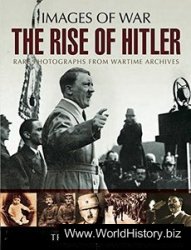Serenely summarizing recent work on Greco-Roman sexuality is impossible. Indeed the disputatiousness (e. g. Boswell 1990a, Hindley 1991, D. Cohen 1991b, Paglia 1991, Eribon 1994: 56) can startle those new to the field and has become an issue in itself (Vattuone 2004: 7-10, Karras 2000, M. Skinner 1996). Fortunately two recent synoptic works, Younger 2004’s encyclopedic A to Z and M. Skinner 2005’s judicious history, survey the field at book length. Snapshots of “the state of the debate” can also be found in the introductions to some recent collections of articles, old and new (e. g. McClure 2002, Golden and Toohey 2003, Nussbaum and Sihvola 2002; on prostitution, Faraone and McClure 2006; on relationships between women, Rabinowitz and Auanger 2002), and sourcebooks on sexuality in general (Johnson and Ryan 2005), and homosexuality in particular (Hubbard 2003). This chapter has to some extent been in dialogue with them, complementing them. I have put my own views on recent work down on paper in several critiques at greater length.
If peaceful consensuses are lacking, one can at least survey some of the battlefields and battle history; it’s a convoluted story, but one full of surprises and ironies. The main arguments seem to concern the agency of courtesans and the degree to which they are (truly) represented in texts and artifacts (Kurke 2002, S. Lewis 2002, Ferrari 2002: chap. 2, Dalby 2002, Davidson 2006a), or are largely figments of the ancient and modern male imaginaire (Keuls 1985: 160-86), the existence, or not, of “sacred prostitution” (in Greece: McClure 2003: 126-65, in Italy: Glinister 2000; even in the Near East: M. Roth 2006, Bird 2006), what that might mean in the first place (Pirenne-Delforge 1994: 100-127), whether it’s just a hostile projection onto the Other; the nature of “homosexuality,” whether we can even talk of any “nature” (Halperin 1990: 15-53), or whether it is a question of contingent roles in sex (Veyne 1978: 50-53, J. Winkler 1990: 17-70, Halperin 1990: 88-112 cf. Davidson 2007: 23-32, 101-34), or if, on the other hand, it is just a question of “initiation” (itself a controversial topic, Dodd and Faraone 2003), a kind of sacred duty performed by adults for young boys, as in Papua New Guinea and nothing to do with homosexuality in the modern West (Patzer 1982, cf. Halperin 1990: 54-61, Davidson 2007: 504-8), if in fact the boys involved in sex were indeed “young” (Hupperts 1988, Davidson 2007: 68-98), whether it’s just an elite and elitist practice (Hubbard 1998, Davidson 2007: 459-63). The now rather venerable suggestion that the Greeks practiced something equivalent to same-sex marriage (Bethe 1907: 450, Gentili 1988, cf. Koch-Harnack 1989: 119, 138-43, Davidson 2007: 300-315, 475-77, 514-16) has provoked new controversy (Rapp 1997, B. Shaw 1997, Bray 2000).
The weapons of choice in such battles are accusations of “naiveness” or credulity, on the one hand, and of excessive skepticism, “cynicism,” and “denial” on the other, with students of ancient homosexuality often worried that others are representing “it” as merely “ritualistic” or “gestural” or in some other way not “properly homosexual,” and students of women worried that others are taking representations at face value; an odd kind of identity-politics adds fuel to the flame, gay-identifying scholars arguing that ancient homosexuality has nothing to do with them, feminist historians engaged in a kind of “unhistorying” of women, arguing that male scholars are seduced by imaginary courtesans and sacred prostitutes created by and ventriloquized by men. Much of it comes down to the notion of “construction,” which comes in several varieties. Feminism, inspired by critiques of racial stereotyping, has long been concerned with the way artifacts make pictures and draw up taxonomies at odds with a real world (real women) they affect to describe: “constructions of.” It comes in soft (not the same as reality) and hard (nothing to do with reality) forms, which we might label “imagism” (e. g. Images of Women in Antiquity) and “inventionism” (as in Inventing the Barbarian) respectively. Students of sexuality are more concerned with the way a culture actually affects its world through images and taxonomies etc. - “social construction,” “constructions as” - with “soft constructionists” allowing that it modifies that world to a degree (being a lesbian in antiquity was different from being a lesbian today), and “hard constructionists” (or “creationists”) arguing that it creates a radically different world (there were no lesbians in antiquity; they had “neither the concept nor the experience” Foucault 1994: iv 286).
Most problematic is a “double-hard” position, which argues that a culture radically misrepresents the radically other world it creates for itself, a courtesan, for instance, in reality nothing like “the courtesan” created for her by her culture (Davidson 2006a: 34), a homosexual subject in a world for which homosexuals don’t exist (Richlin 1993). In the first place there is a problem of knowledge, of getting access to the world a culture constructs for itself when its “constructions of it” in artifacts are utterly false. More seriously, since constructions of a world (its taxonomies, representations, etc.) are an important part of the “apparatus” (Foucault’s dispositif), which constructs (/creates) that world in the first place, a “double-hard” position might seem oxymoronic. Some try to get around these paradoxes by positing radical fissures between the speaking subject, master of a culture’s discourse, and its “Others” (between men and women, free and slave) so that quite separate worlds or bubbles are constructed within the same population (Davidson 2000b) or within the dispositif: a homosexual in her own world happily cocooned from the fact she does not exist in the (male/sexuality-oblivious) ancient world, or the question-begging notion of radical resistance of a sub-culture to a culture’s constructions of it, a courtesan resolutely refusing to conform to the witty, literate, or manipulative type, or subverting the hierarchy with her jokes (McClure 2003: 79-105 cf. J. Winkler 1990: 188-209). The softer kinds of constructionism, on the other hand, which view representations as differing mostly in angle, omission and emphasis (“spinning” facts, halflying), and which view social constructions as molding and shaping rather than creating, seem unexceptionable. In battle context they may seem a bit limply moderate, but beyond the putative battlefields they do allow a messier and less tyrannical view of cultures and of the relationship between the world and its representations.
All this disputatiousness has had some odd consequences. Some good scholarship often goes missing from bibliographies, while some not-so-good stuff has become a permanent fixture. Hoary old (pre-1980) articles and old-fashioned translations often turn out to be improvements on their updated replacements. One example: Aristotle (Pol. 1311b) says that Hellanokrates of Larisa killed Archelaos, king of Macedonia, because Archelaos’s subsequent duplicity made it clear that their relationship had been one of hubris (abuse) rather than erotike epithumia (love-inspired desire); in other words Hellanokrates realized he had been used. Sinclair got it exactly right in his 1962 Penguin translation: Hellanokrates grasped that Archelaos had felt no “passionate love” for him; even Jowett’s lack of “affection” got the tepid gist of it in 1885. But Jowett has been revised. Modern readers are told that Hellanokrates murdered Archelaos because Hellanokrates later realized Archelaos had not had “sexual desire” for him (J. Barnes 1984: 2082), which rather misses Aristotle’s (and doubtless Hellanokrates’) point.
Some of the most important contributions have come from those outside the field, or indeed outside the Academy entirely. It took a medievalist, for instance, to notice the straightforward truth that Ephoros’s Cretan “little custom” was an initiation into a publicly recognized same-sex relationship (Boswell 1994: 89-94), not a rite of passage into adulthood (Graf2003) “deeply rooted in ape prehistory” (Burkert 1979: 29).
Above all there are some important works which meticulously gather a lot of information, but in the service of a shaky premise. Sergent (1986) is by far the fullest collection of material on homosexuality in Greek myth, and in many ways a superb piece of scholarship, but not even Dumezil who wrote the preface was, it seems, wholly convinced by the author’s insistent interpretations of these myths as echoes of prehistoric Indo-European rites of passage. Dover 1988 offers the most lucid critique of Sergent’s initiation theory, but his own work (1978) was based on the premise that eran and its compounds refer to a sexual “desire to penetrate” and that all the contradictions in the sources can be resolved with reference to double standards regarding the sexually active dominant erastes and the sexually subordinate and vanquished eromenos. If one rejects that premise, as, I think, one must (on vocabulary cf. Calame 1999: 13-48), Dover’s analysis and the work of the now countless scholars who depend on him and that premise, is vitiated (or somewhat vitiated, depending on one’s point of view), a hard thing, inevitably, to acknowledge.
Such disputes go all the way back to the beginnings of modern philology in the argument between Bentley and Boyle over whether erastes necessarily referred to a flagitious love of boys - one of the few issues on which Boyle was right (Bentley 1697: 53; Boyle 1698: 65-66). As that example demonstrates, part of the problem is the very nature of the topic, the “immorality” or not, of the revered Greeks and less revered Romans. By contrast, the first classic of the field (M. Meier, 1837), still considered by some of us (e. g. Demand 1980, Davidson 2007: 105-7) the most reliable overview of Greek homosexuality, followed a Rankean methodology of “empiricism,” i. e. prioritizing “primary” documentary “sources” and eschewing judgment (“amoralism”). Meier’s Rankean approach for the first time elevated Aeschines’ speech at the trial Against Timarchos (1) to the central position it enjoys today. Commentaries on that (Fisher 2001) and, for female prostitution, on Apollodoros’s Against Neaira [Dem. 59] (Carey 1992, Kapparis 1999) often provide the most soundly based and relatively peaceful introductions to the topic. More recently, images too have been prioritized as primary documents, “showing” what texts don’t tell (DeVries 1997, Hupperts 1988). The evidence of the most “primary” source on Spartan homosexuality, however, Xenophon, is routinely dismissed out of hand (cf. Hindley 1994, 1999, Davidson 2007: 326-31), while images are no less complicated than texts to read, and although Aeschines 1 provides a lot of interesting information on homosexuality in Athens, its main concern is the peace with Macedonia, which he was in favor of and which Timarchos vociferously opposed, and corrupt “whorish” relationships between politicians; it remains a distinct possibility that Timarchos was not only not a prostitute in any ordinary understanding of that term but that neither Aeschines nor the jurors who convicted him ever believed he was.
Moreover, “amoralism” can itself become a problem, as scholars have competed to prove themselves steelily determined to face up to “nasty truths” which older scholars like Jowett, or indeed the ancients themselves, might have been tempted to veil. So that it is precisely what sources don’t mention that becomes the most important thing: hence semnotatai (classy) jetsetting, Homer-parodying, coin-eschewing “courtesans” are just euphemistic “whores” (cf. Davidson 2004b), and all the heavily romantic idealization in the materials on same-sex Eros is designed to disguise relationships based on penetration and humiliation, “a sign not of tolerance but embarrassment” (Foucault 1994: iv 286-87 cf. Davidson 2004a 107-14).
“Constructionist” theories generally take their inspiration from twentieth-century battles against racial (especially Nazi) theory, with anthropologists led by the Boasian school postulating a super-strong culture, hard-wired like a language (a cultural “idiom”) and/or with language itself playing a central role in how that culture remakes the world, its people, and things (like a “tool-kit” or a “prison”), to oppose to nature and biology (itself founded on historical linguistics, “Semitic,” “Aryan”). At its most extreme it resulted in the “Whorfian hypothesis” (Barnard and Spencer 1996): no homosexuality without the word “homosexuality” (Halperin 1990: 15-18 cf. Davidson 2007: 135-39). Two other students of Boas meanwhile are ultimately responsible for the slightly different idea that different cultural “configurations” produce different “misfits,” and that it is the experience of misfitting that makes homosexuals neurotic in a way they were not in Plato’s time (the soft constructionism of Benedict 1934: 188-89, 191), or indeed is largely responsible for producing them (whatever that might mean) in the first place (Mead 1943: 178, cf. Davidson 2007: 140-151). Mead was the most important influence on West, who argued that Western societies should adopt a more casual “Samoan” approach to sex, a kind of “mental hygiene” which might substantially reduce the number of homosexuals in society (1960: 177-78). West in his turn was an important influence on Dover’s view (1978: vii-viii, 2, 202-3) that Greek homosexuality was a cultural product; more precisely it was a pseudo-sexuality, “behavioral” rather than “psychological,” an idea he took from the “ethnopsychoanalyst” George Devereux (1967; 1970).
The second wave of anthropo-linguistic superstrong culture theories was no less concerned with racist biological theories, determined to prove that homosexuals were a contingent category which did not constitute a Jewish-style “people,” no more than Jews did, or “Aryans” (Veyne 1979: 17-18, cf. Davidson 2007: 152-66). It took inspiration from the “structuralism” of the linguist Saussure through the mediation of the “structural anthropologist” Levi-Strauss. Saussure viewed signifying systems such as language as nothing more than an abstract structure of differences (between e. g. voiced syllables) at any one time. Michel Foucault, considered by far the most important recent influence on the study of ancient sexuality, applied the same approach to systems of knowledge (epistemes), especially knowledge of humans viewing each discipline not so much as (or not at all as) an empirical response to the world but as merely another structure existing in one time and place but not in another, “games of truth.” Latterly he turned his attention to structures of knowledge of sexuality, focusing especially on sexual self-knowledge, sexual autobiographies, confessions, psychoanalytic sessions (1978). Foucault himself posthumously published two books on sexuality in the ancient world (1985 and 1986). The first was really two books rolled into one, one about citizen ethics of self-mastery (enkra-teia), one about sex, but he brought the two concepts together with the metaphor of “being penetrated by desires,” self-control assimilated to the active position in homosexual sex, and so made sodomy the centerpiece of the problematization of the Self. Timarchos managed to retain his starring role, no longer as a primary documentary Rankean witness but as a perfect combination of politician, wastrel and (supposedly) pathic. Foucault’s last book (1986) argued for a more severe and more private approach to pleasure in the first centuries ad, practices of abstinence, idealization of marriage as a loving couple, and the decline in status of same-sex relationships which did not seem to compare well. Despite all the complexity of his work on the ancient world, and frequent statements as to his enormous influence, much of what he said about antiquity has been ignored. Foucault’s followers have been content to use the strangeness of ancient sexuality more straightforwardly as proof of his earlier claim that there was no “homosexuality” as such before it was invented by psychologists in the nineteenth century. Rather the ancients had a typically macho Mediterranean “ethos of penetration and domination,” which Foucault famously claimed to consider “disgusting” (1984: 346).
Focusing on the disputes and arguments is the only way to make sense of the volumes of disagreeing work on ancient sexuality, but it does mean that some useful work which is tangential to those disputes or bypassed by them tends to get overlooked. The disputes are interesting central and important in their own right. Few other fields of ancient study have been as thoroughly engaged with other disciplines and methodologies and few have had as much influence on other disciplines or have been as directly relevant to the lives of modern people. But there has been a downside to being at the center of attention as the business of contributing to the debate has sometimes got in the way of contributing to knowledge. Ancient sexuality may be an especially difficult field, with especially slippery kinds of data, but that does not mean truth is here, uniquely, merely a matter of subjective opinion or there is no truth: either Theban magistrates made love to courtesans at the end of their term of office or they didn’t, either temples of Venus Erycina owned prostitutes or they didn’t, either Timarchos was a common prostitute or he wasn’t. Perhaps it might be better if it was not considered a separate field at all, for there are few areas of the ancient world where love and sexuality does not encroach, and that includes the kinds of things mainstream historians of politics, states, and dates are interested in, Tyrants and Tyrannicides, Perikles’s Funeral Speech, relationships between Meno of Pharsalus with Tharypas the Molossian and the Persian Ariaeus, Theognis, Alkaios, and archaic aristocratic factions, Demosthenes and his pupils, the rise of Thebes, politics at the court of Alexander. Experts in other fields outsource the job of understanding ancient sexuality to the disputatious sexperts at their peril.




 World History
World History









